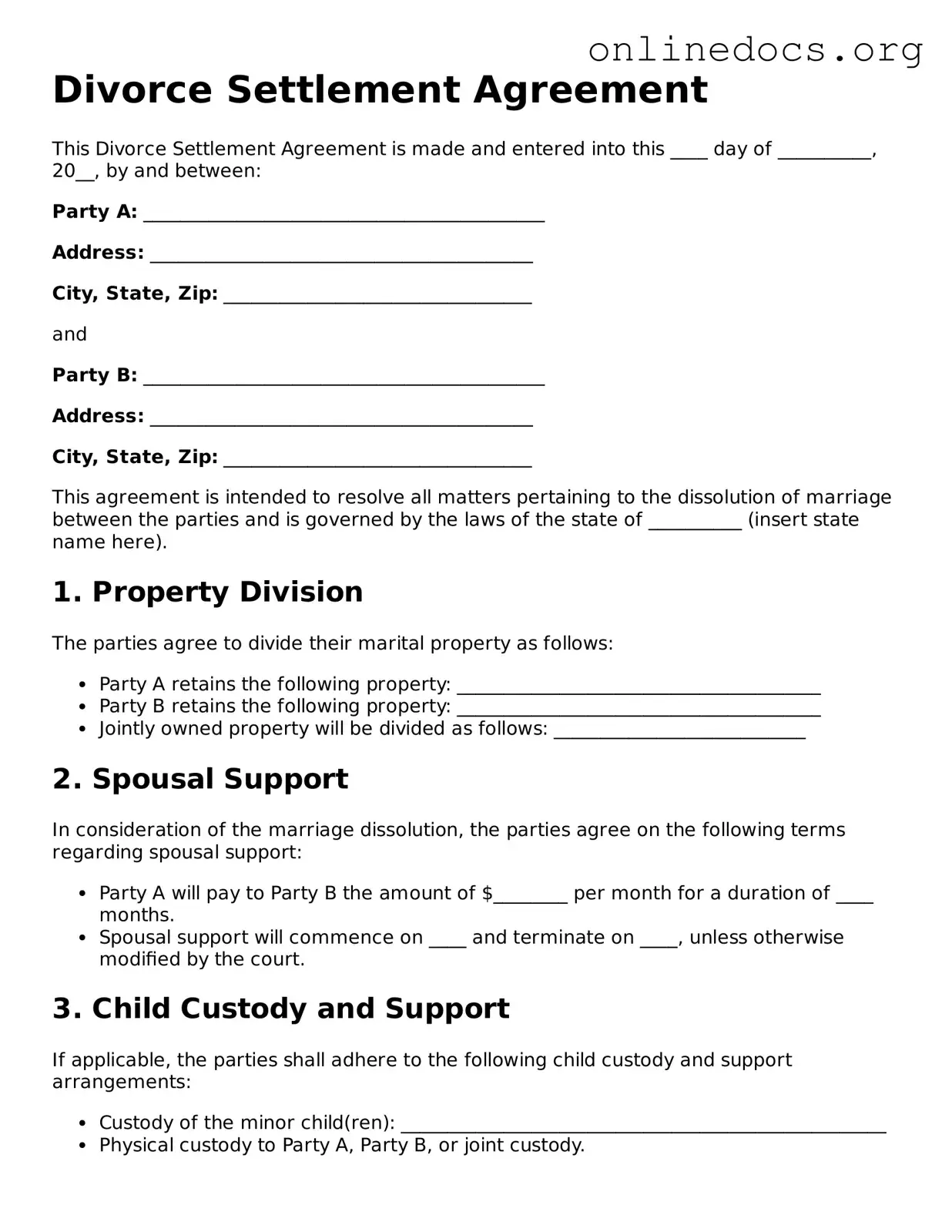Filling out a Divorce Settlement Agreement form can be a daunting task. Many people overlook important details that could affect their future. One common mistake is not being thorough when listing assets and debts. It’s crucial to provide a complete inventory. Forgetting to include even a small asset can lead to complications later on.
Another frequent error is misunderstanding the terms of child support and custody arrangements. Many individuals rush through this section, failing to consider how these decisions will impact their children’s lives. It’s essential to think carefully about the best interests of the child and to clarify all terms to avoid confusion.
Some people neglect to consult with a legal professional before submitting their agreement. While it may seem like an unnecessary step, having an expert review the document can help identify potential issues. A fresh pair of eyes can catch mistakes that you might miss.
Additionally, individuals sometimes forget to update their information. Changes in circumstances, such as job loss or relocation, should be reflected in the agreement. Keeping everything current ensures that the settlement remains fair and applicable.
Another mistake is failing to be specific about the division of property. Vague language can lead to misunderstandings and disputes later. Clearly defining what each party is entitled to can save time and stress in the future.
Many people also underestimate the importance of including tax implications in their agreement. Failing to consider how property division and support payments will affect taxes can lead to unexpected financial burdens. It’s wise to consult with a tax professional to understand the implications.
Some individuals rush through the process, leading to incomplete or inaccurate information. Taking the time to carefully review each section can prevent costly errors. A well-thought-out agreement is essential for a smooth transition post-divorce.
Another common oversight is not being aware of state-specific laws regarding divorce settlements. Each state has its own rules and requirements, and not adhering to these can invalidate parts of the agreement. Familiarizing yourself with local laws is crucial.
Lastly, people often forget to include a dispute resolution clause. This clause can provide a clear path for resolving any disagreements that may arise in the future. Having a plan in place can ease tensions and foster cooperation.
In conclusion, paying attention to detail when filling out the Divorce Settlement Agreement form is vital. By avoiding these common mistakes, individuals can create a more effective and fair agreement that serves their best interests.
